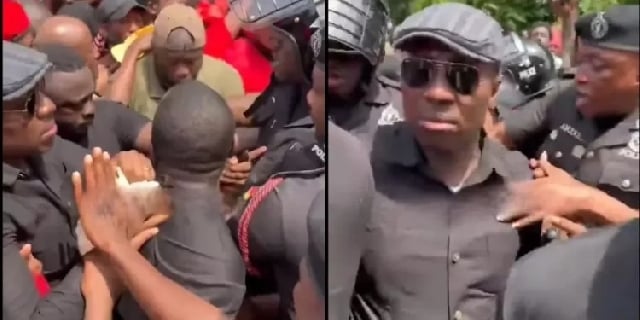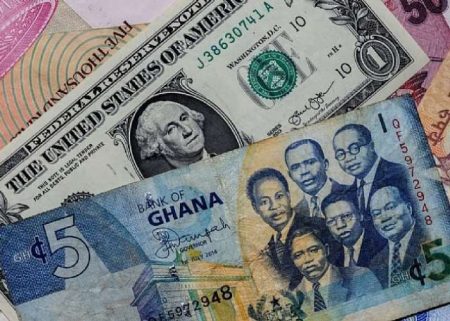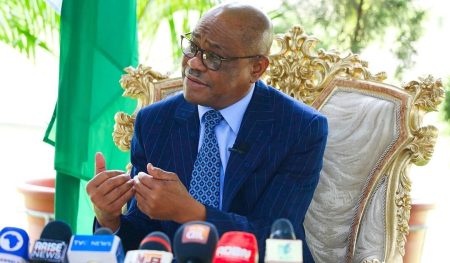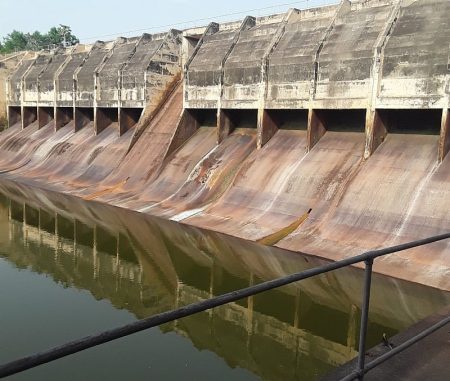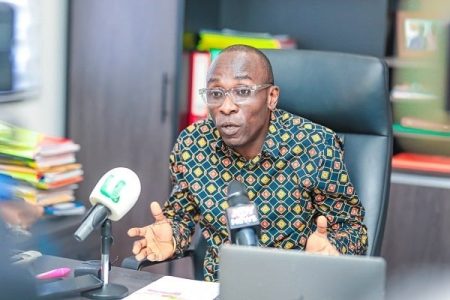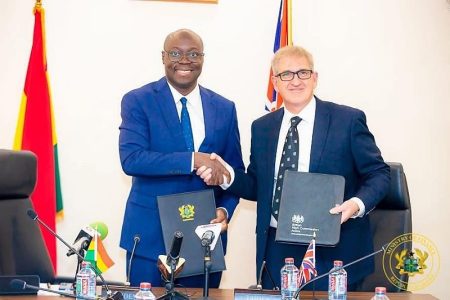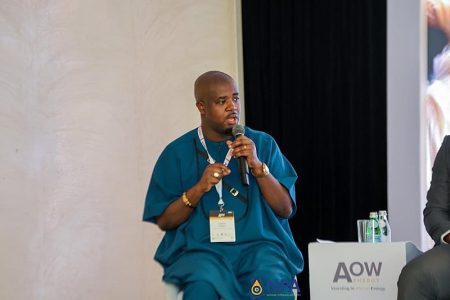The clash between Minority Leader Alexander Afenyo-Markin and a police officer during the #SaveTheJudiciary protest on May 5, 2025, sparked a heated political debate, highlighting the delicate balance between the right to protest and the maintenance of law and order. Mustapha Gbande, Deputy General Secretary of the ruling National Democratic Congress (NDC) and Deputy Director of Operations at the Presidency, strongly condemned Afenyo-Markin’s actions, accusing him of physically assaulting a police officer and demanding an apology from both the MP and his party, the New Patriotic Party (NPP). Gbande framed the incident as a blatant display of disrespect for law enforcement and an abuse of power by a leading member of the opposition. He further criticized the perceived leniency shown towards the NPP protesters compared to previous demonstrations by other political parties, suggesting a double standard in the application of law enforcement protocols during protests.
The incident itself, captured on video and widely circulated on social media, depicts a tense exchange between Afenyo-Markin and a police officer stationed behind a barricade during the protest. The video appears to show Afenyo-Markin making physical contact with the officer, an action interpreted by Gbande and the NDC as an assault. This visual evidence became the crux of the NDC’s accusations, fueling their demands for accountability and an apology. The incident quickly escalated into a political standoff, with both sides entrenched in their respective narratives and interpretations of the events. The controversy unfolded against the backdrop of the #SaveTheJudiciary protest, further politicizing the incident and adding another layer of complexity to the unfolding narrative.
Afenyo-Markin, however, presented a starkly different account of the events. In a statement released shortly after the video went viral, he asserted that he was the victim of provocation and unwarranted physical aggression by the police officer, identified as Constable Forson. According to Afenyo-Markin, the officer struck him forcefully in the chest as he approached the barricade to deliver a petition. He claimed that the blow, which landed near his heart, caused him significant distress, requiring the intervention of senior police officers who provided him with water and helped him regain composure. This counter-narrative portrayed the MP not as the aggressor, but as a victim of police brutality. He framed the incident as an overreaction by law enforcement and an infringement on his right to peacefully protest.
The differing accounts of the incident underscore the challenges in establishing a clear and unbiased understanding of what transpired. The presence of video evidence, while seemingly providing a definitive record, is subject to interpretation and can be used to support conflicting narratives. The context of the protest, the heightened emotions involved, and the pre-existing political tensions between the ruling NDC and the opposition NPP all contribute to the difficulty in discerning an objective truth. This ambiguity further fuels the political debate, allowing each side to selectively emphasize aspects of the incident that support their respective positions.
The Ghana Police Service, in response to the incident and the competing claims, initiated an investigation and invited Afenyo-Markin to assist in the process. This move reflects an attempt to establish an official account of the events and determine whether any wrongdoing occurred on either side. Simultaneously, Afenyo-Markin lodged a formal complaint against Constable Forson and petitioned the Inspector General of Police, demanding disciplinary action against the officer. This parallel action demonstrates his commitment to his version of events and his pursuit of redress for the alleged assault. The concurrent investigations, one focusing on the MP and the other on the police officer, create a complex legal and political landscape.
The incident and its aftermath highlight the escalating tensions between the ruling party and the opposition, particularly concerning the right to protest and the role of law enforcement in managing public demonstrations. Gbande’s accusations against Afenyo-Markin and the NPP reflect the NDC’s stance, portraying the opposition as disrespectful of authority and prone to violence. Conversely, Afenyo-Markin’s counter-accusations and his pursuit of disciplinary action against the police officer reflect the NPP’s perspective, portraying themselves as victims of excessive force and suppression of their right to protest. The incident becomes a microcosm of the broader political struggle between the two parties, further polarizing the political landscape and raising concerns about the potential for further escalation of tensions. The investigations by the Ghana Police Service will likely play a crucial role in shaping public perception and potentially influencing the political fallout of this contentious incident. The outcome of these investigations could either exacerbate the existing tensions or, if handled judiciously and transparently, contribute to de-escalation and a more balanced understanding of the events.





